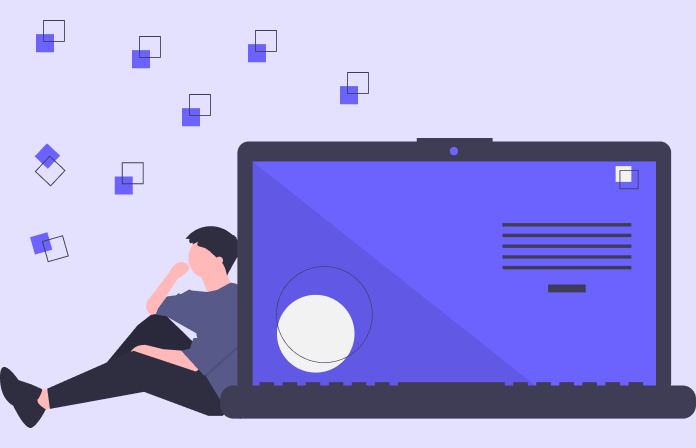Introduction
For the first time in history, it is possible to study human behavior on a great scale and in fine detail simultaneously. “Psychoinformatics is an emerging discipline that uses tools and techniques from the computer and information sciences to improve the acquisition, organization, synthesis of the human psychological data.” Traditionally data collection in psychology always relied on two techniques: experiments and interviews or questionnaires. These methods are only applicable to a small number of audiences and in a controlled setting that can be easily manipulated and biased by the audiences.
To overcome these biases in traditional data collection, modern computer sciences introduced a new technique of assessing the behavior of the audiences. These techniques can help collect the data from a large group of audiences using computing devices which are largely concerned with implementing algorithms. For the collection of human psychological data, algorithms are widely used by mobile devices to analyze these data.
Psychoinformatics to study Human Behaviour
Over the past 20 years, there has been a significant development in the field of computer technologies. Technological advancement in computer science provides support for classical data collection methods such as interviews and questionnaires. They enable psychological data collection to be conducted and implemented from the mobile devices, allowing us to store and analyze large amounts of data at a very little cost which can boost the range of the experiments that can be conducted for data collection of human psychology and behavior.
Psychoinformatics experiments can be conducted several times per day over an extended period which generates a large volume of data points per user. Electronic sensors have improved significantly over the last few decades and pose another powerful technology for assessing human conditions and behavior. They can identify different human actions and measure them very precisely. For example, they can measure mood and cognition, stress level, hydration level, etc.
Similarly, some sensors can be ingested and can be used to observe the bodily functions of internal organs in the human body and collect data from them to predict potential diseases like cancers. They have become much more effective and cost-efficient in recent times. Sensors can send their data automatically to a server via a smartphone and portable handheld devices. Efficient processors and powerful batteries have dramatically reduced the need to charge sensors. These factors make it possible for zero or the low maintenance of data collecting sensors of the participant.
Psychoinformatics: Tech and Strategy
The concept of the Internet of things (IoT) has enabled our everyday machines to be smart and efficient. IoT is the system of interrelated computing devices that share data over a network without any human interaction.
Your microwave today is smarter than the desktop computer from a decade ago. It can now tell you when your food is ready, and when it needs maintenance. Besides, it can even send you messages and notifications. Every device nowadays produces a huge amount of data by documenting its actions. The storage and analysis of this data on a large scale are commonly referred to as Big Data. There is no causal relationship between data collection and its analysis; i.e. data is commonly analyzed to answer questions that were only vaguely known.
All these data are collected through human-machine interaction. This can sometimes lead to a dangerous situation by showing false-positive results. For example, Your fitness tracker can misjudge your slow bike ride as jogging, your smartphone can show you your stress level is astonishingly high even if it’s not.
There are still many possibilities for false-positive results from our smart devices. This makes correct mapping of human behaviors and actions quite tedious. These false-positive results are also considered as noise in terms of psychological data collection.
Therefore, results observed from multiple follow-up experiments of initial psychoinformatics data sets will be necessary. One good thing about this is, it is doable and affordable. Massive amounts of data are commonly collected without an immediate business case.
However, not knowing the later application scenario at the time of data collection might cause some problems. Scientists may not be able to anticipate whether or not the data will display patterns of interest or support a certain hypothesis.
The introduction of smartwatches and smart glasses has further enhanced the ability to track human behavior, mood, and actions. You might have heard the news of the Apple watch calling the ambulance during the time of heart attack. Additionally, recent advancements in miniaturization have made wearable sensors small and affordable enough for everyday use. While it is thus possible to track the user’s movements in the real world, we must also track online behavior. People spend a significant amount of their time interacting with Web applications, such as social networks, shopping sites, or online games.
Most of these services offer an interface that allows recording of our online activities such as, with whom we communicate, for how long, what we buy, at which time, and how much we enjoy fighting orcs with magic swords in computer games. Any such behavior might correlate with traits of personality, while reported changes might aid a clinical practitioner in treating a psychiatric disorder.
Challenges
The core challenge for Psychoinformatics lies in its interdisciplinarity. Neither psychology nor computer science can achieve this level of progress independently.
Psychologists cannot construct large-scale tracking systems to collect and manage the resulting data. Thus, they stand to benefit from methods of data modeling and mining. Ethical challenges like data privacy should be addressed; people participating in these psychoinformatics experiments should be comfortable sharing their data for research purposes.
Naturally, data privacy is a major concern and a more problematic issue arises when psychological findings are put to practice in big data applications. Applications might be able to deduce the personality traits of a particular user from their online behavior and they might have to face disgrace and dishonorable behavior from society.
On the other hand, it's difficult for computer science to correctly anticipate a large set of data. They need to relate those data with the correct human behavior.
Possibilities
Psychoinformatics is still in its infancy and may not even be recognized as such, the path ahead is laid out. Over the next decade, we will see numerous and massive research undertakings between human psychology and computer science.
Soon, the researchers will embark on numerous projects incorporating simple aspects of human-machine-interaction and wearable sensors. We will see an increasing number of research undertakings, residing evenly between computer science and psychology. Eventually, the focus will shift towards data analytics due to the high volume of psychological and behavioral data of a large number of populations. Big Data is about to revolutionize both psycho-sciences in research as well as therapy.
Once a large volume of data is analyzed and mapped with human psychology and behavior, there will be endless possibilities for the prediction of human mood, behavior, emotions, and actions and also can be used to treat the underlying psychological disorders of the board population. Therefore, psychoinformatics can create numerous possibilities for systematic study in human psychology.
Subscribe to Programiz Blog!
Be the first to receive the latest tutorial from Programiz by signing up to our email subscription. Also more bonus like inside looks on the latest feature and many more.


